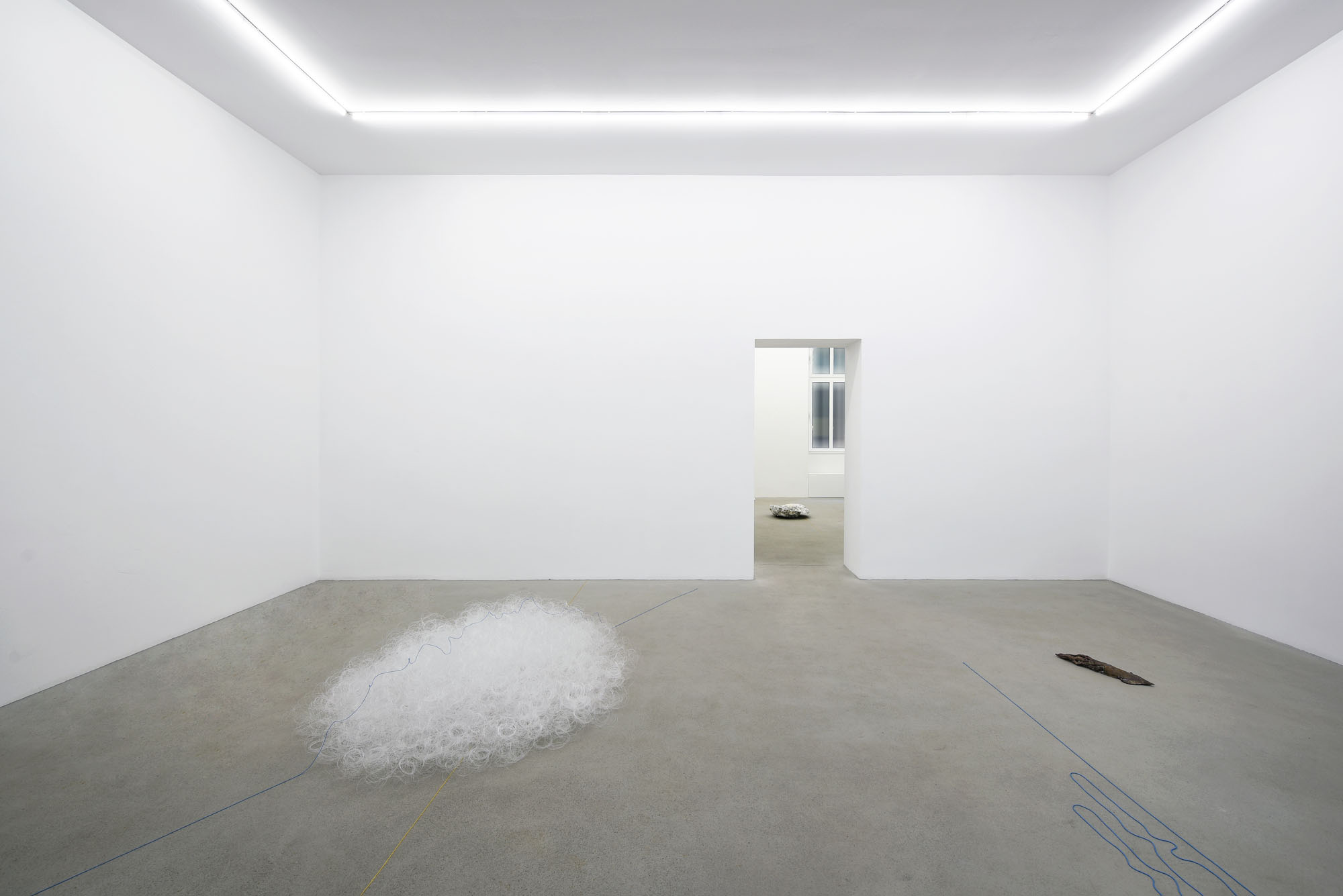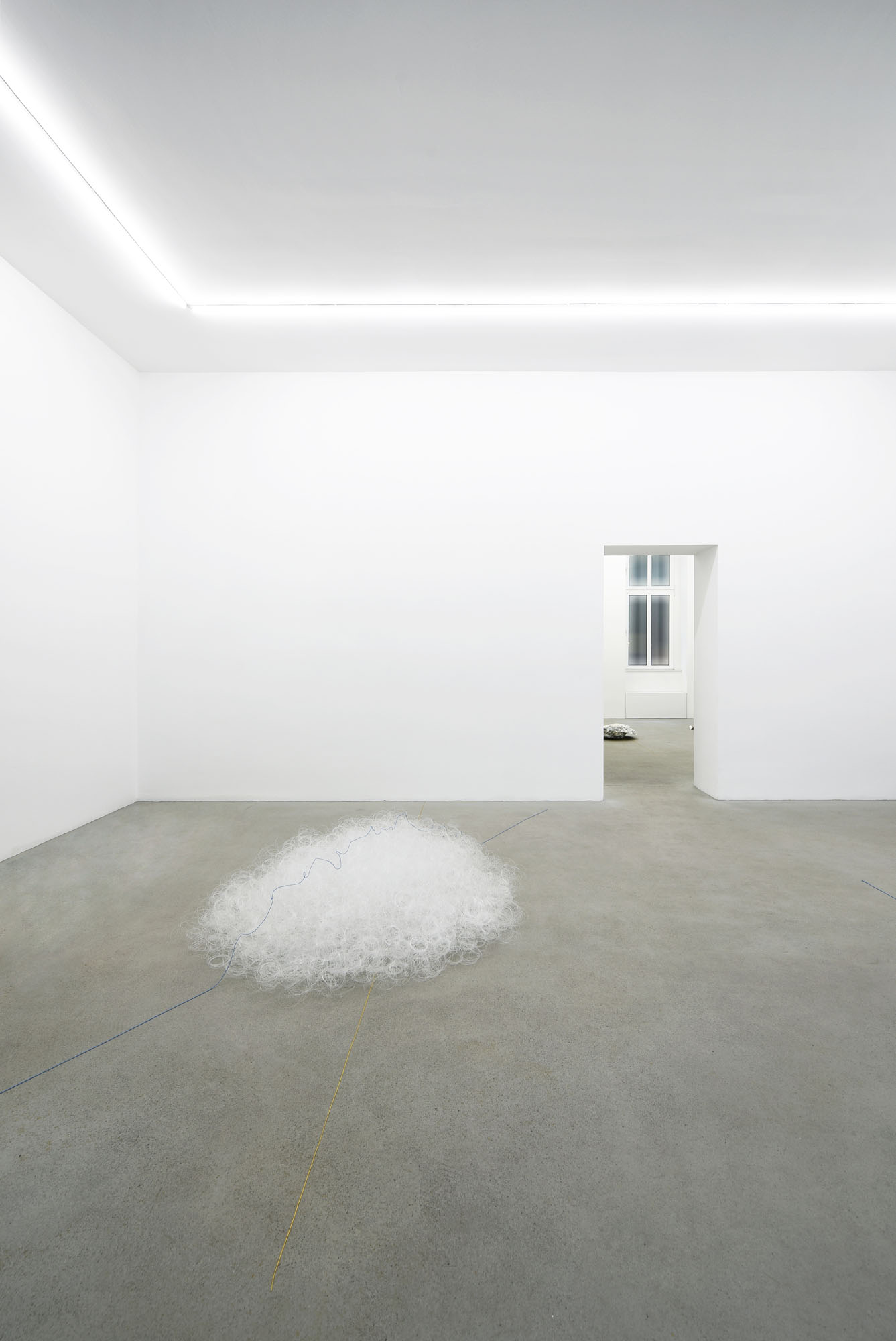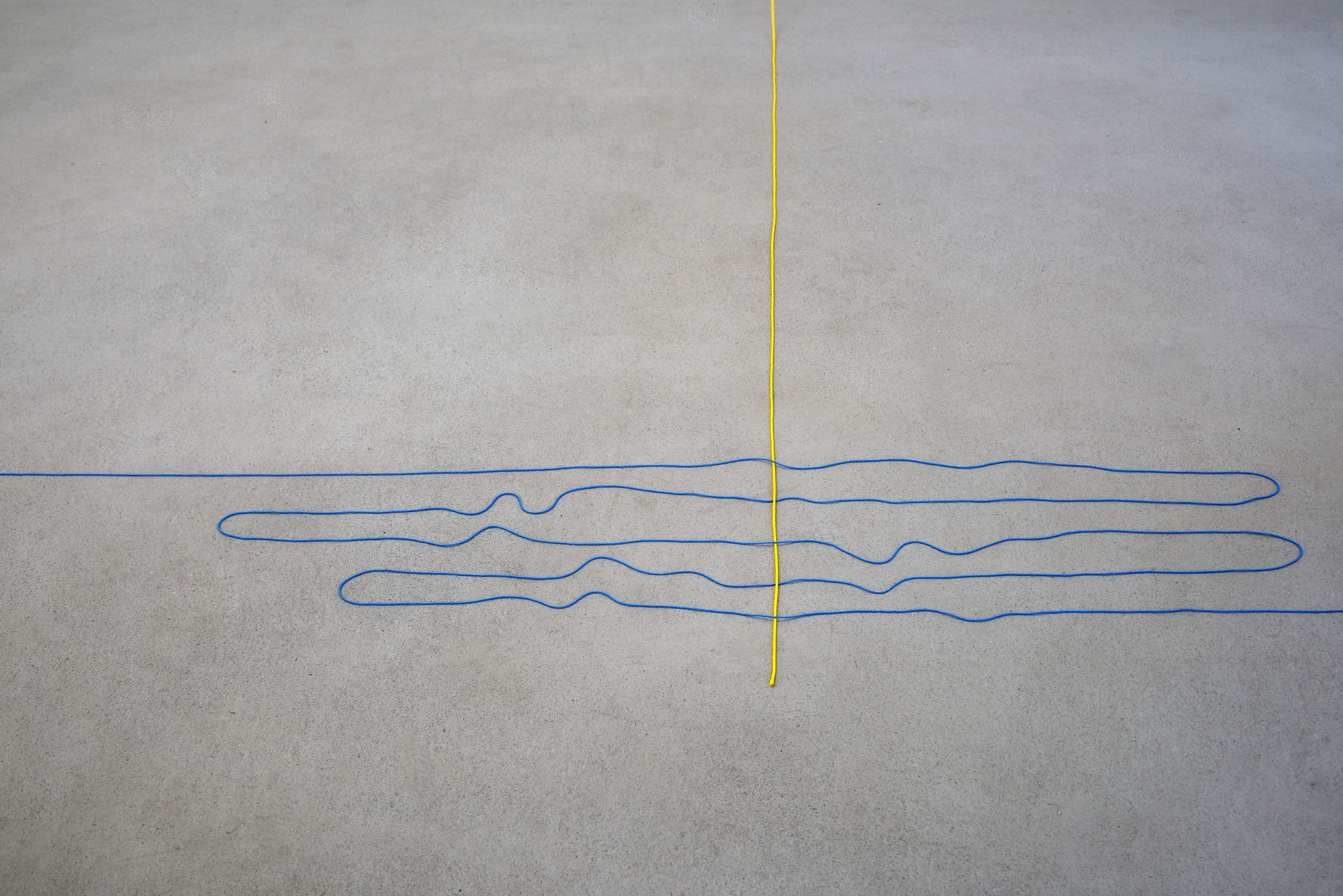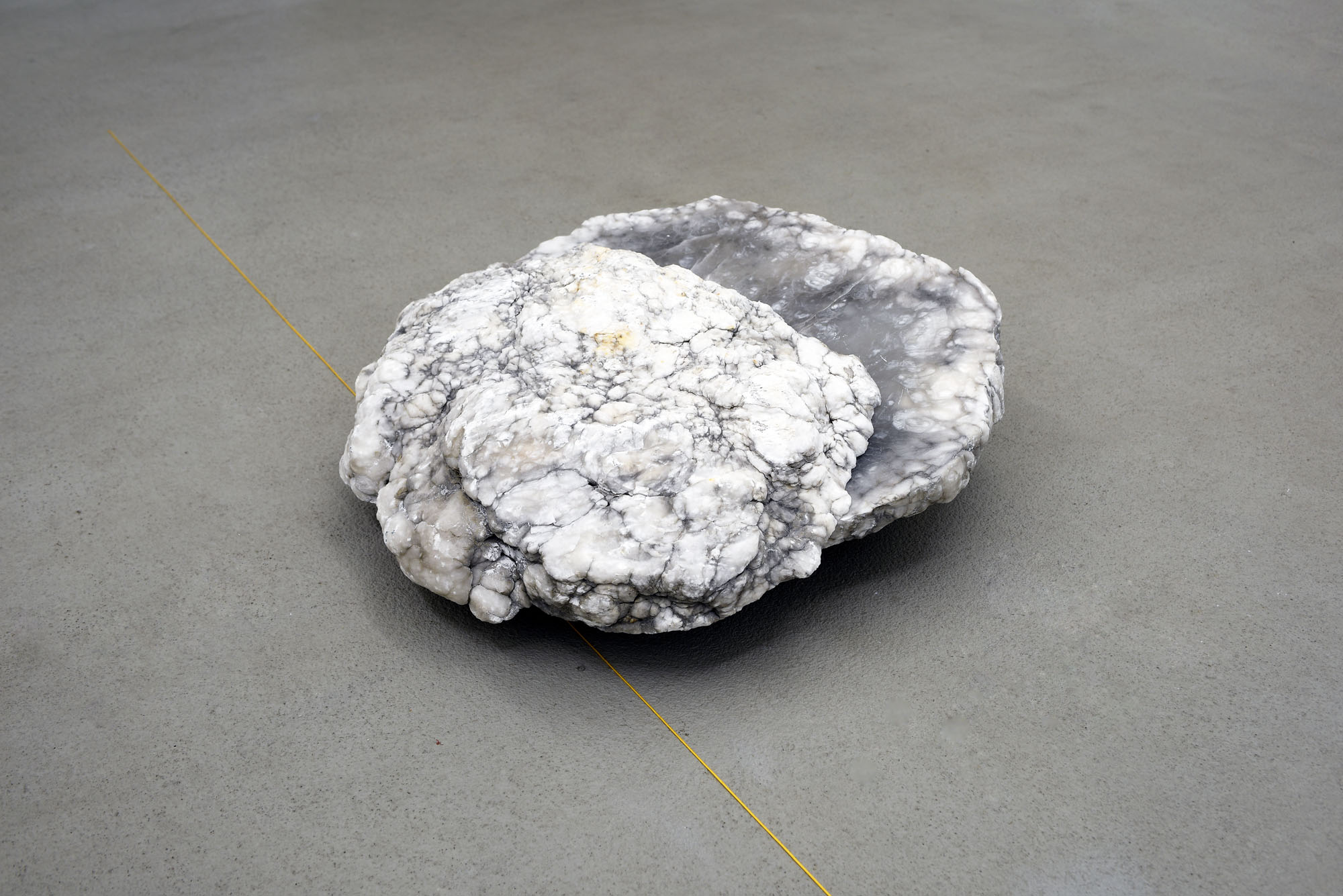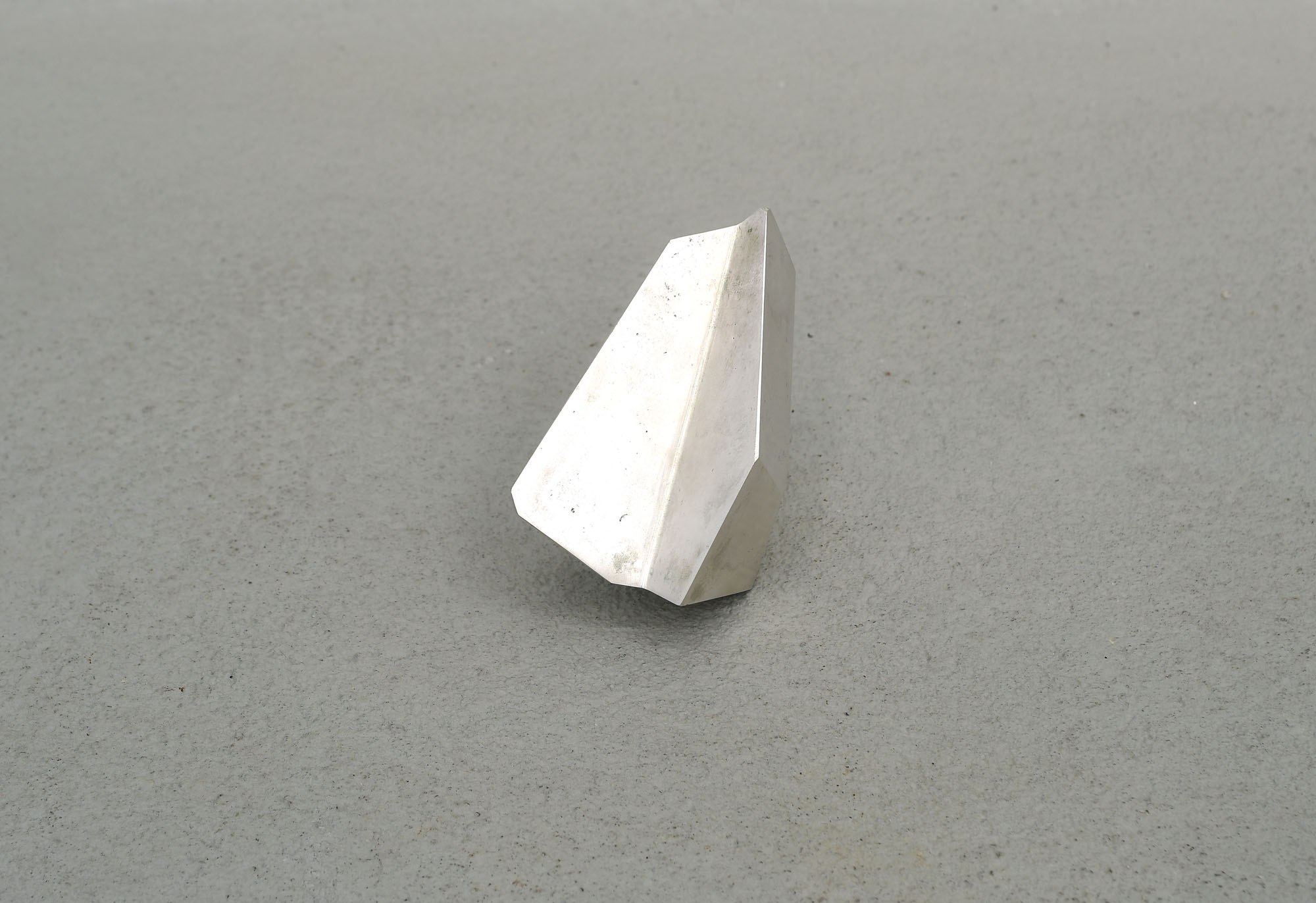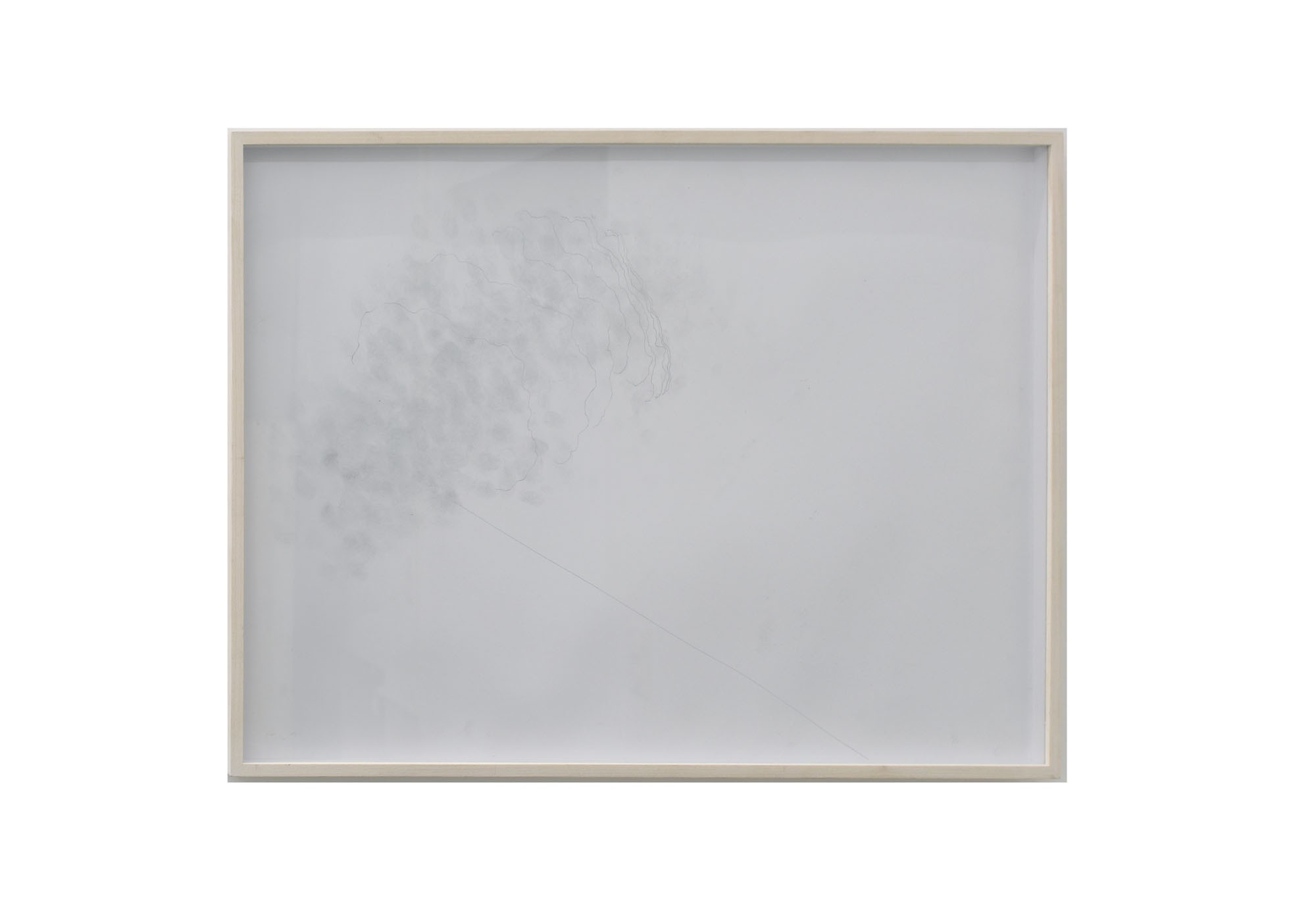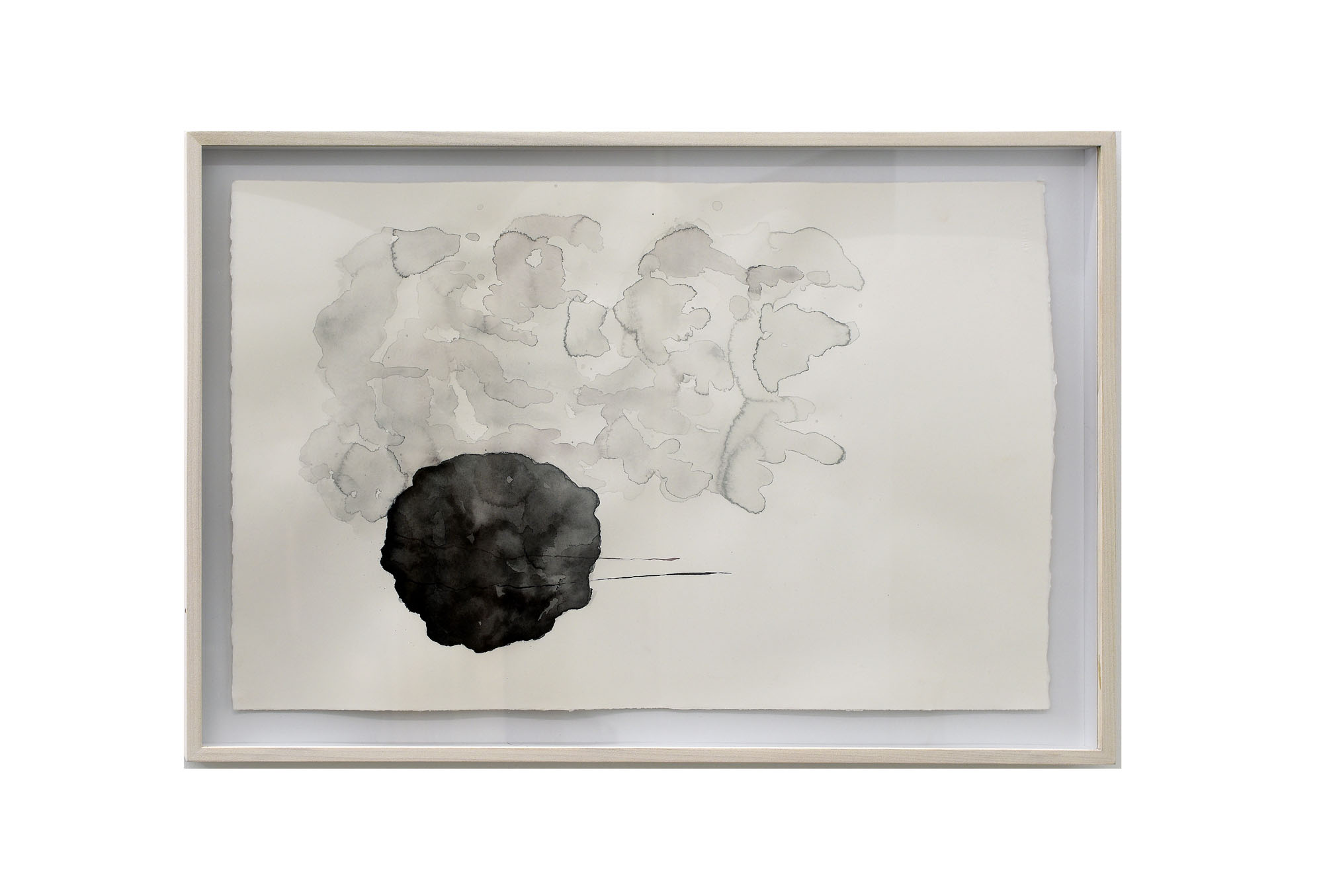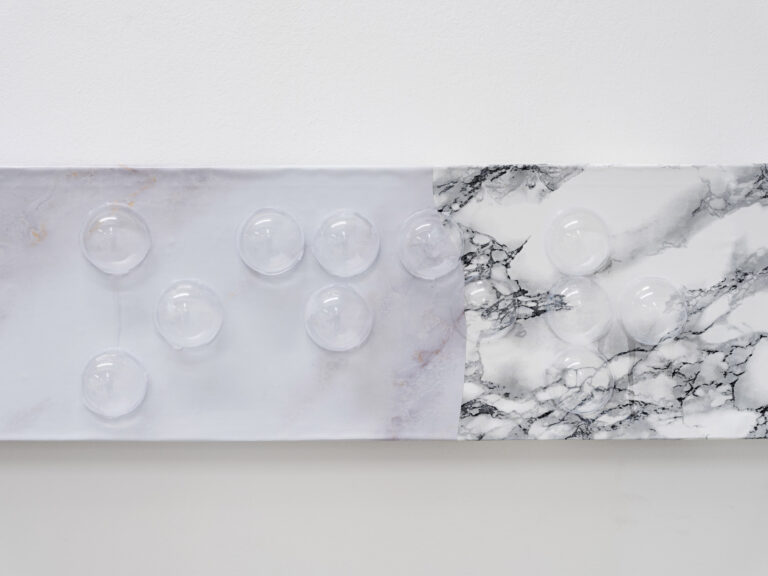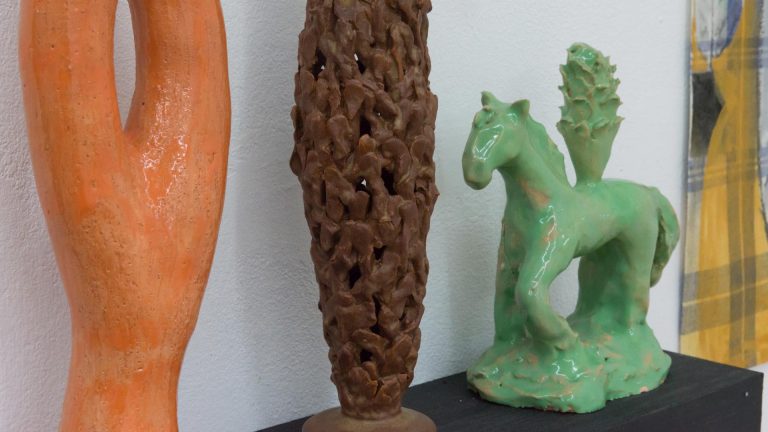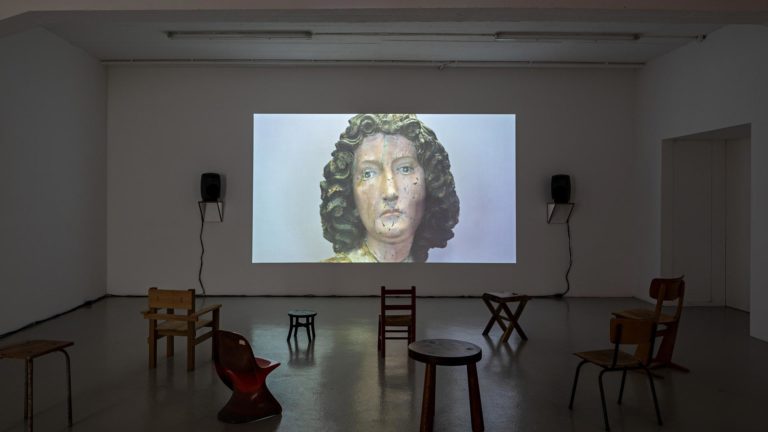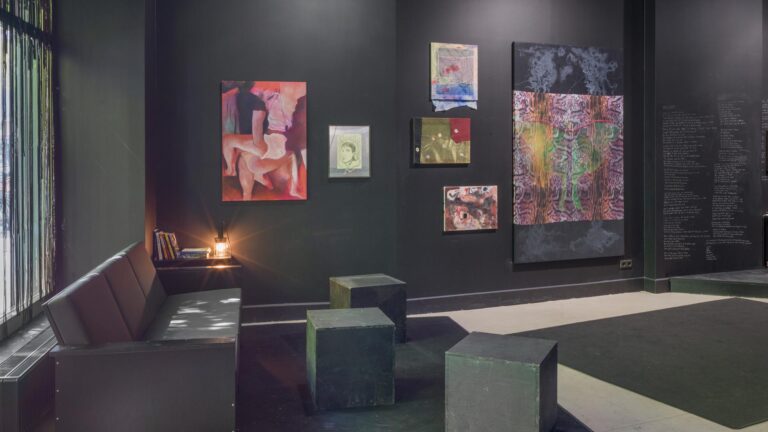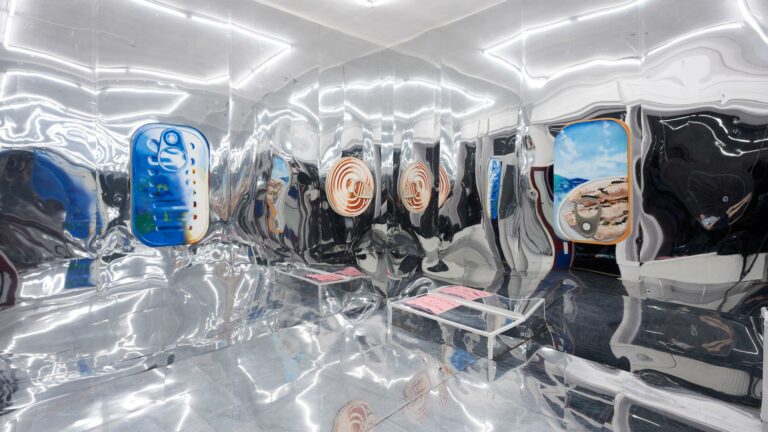Artist: Gianni Caravaggio
Exhibition title: Reine Empfindung
Venue: Rolando Anselmi, Berlin, Germany
Date: May 2 – June 14, 2019
Photography: Riccardo Malberti / all images copyright and courtesy of the artists and Rolando Anselmi, Berlin/Rome
Reine Empfindung (1)
I’m interested in a certain issue related to abstraction. This early ‘900 issue can be brought back to the German Romanticism. For instance, if we think about the geometrical structure of “Die Zeiten” by Philip Otto Runge – in which the motion and the cyclicity of celestial bodies is visualized –, or if we recall Novalis’ desire of “romanticize the world”, a call to a more interior and deeper perception of the reality. The romantic vision of an interiorised reality has been retrieved by the abstractionism during the beginning of the XXth century, fundamentally by Malevič and Mondrian. However, I do think their work has been just a hint of the inner potentiality that inhabit this issue – and considering that such approach had to make way to a more illustrative and tautological vision of the world –. The sense of abstraction I’m intrigued by tends to a more felt, complex and engaged vision compared to the representation of the world seen through the mirror.
While the momentary and I would say photographical representation aims to an immediate recognition – for example, in a picture of a snowy landscape a snowy landscape is recognizable – the doubt arises if this act of recognition isn’t a fruition limit compared to the memory, the imagination and the experience of a snowy landscape. I think that this sense of abstraction might be able to trespass this fruition limit and stimulates what Kasimir Malevič defined as “Reine Empfindung” (pure sensibility) of perception. The ambiguous Character of “Empfinden” translated as “sensibility” or “sensation” is interesting: John Locke means an external experience while David Hume intends also an inner experience. Leibnitz speaks about “Empfindung” underlining the autonomy of the soul. (2)
With “Reiner Empfindung” I mean pure sensibility that is to say a perception able to recall prior images preexisting in us, in our memory, in our feelings and in our physical feels (let’s think for example to “Boy with a Knapsack”, 1915). In this stimulating dynamic what is not by itself a snowy landscape get generated in the act of fruition. It’s enough to catch and isolate a particular evocative flash to make possible that elementary forms – almost looking in opposition to the idea of a landscape – recall that image insistently. Artwork’s titles act as a quasi – causality (3) (as Deleuze would define it), that means that it’s not the tautological nomination of what we are seeing, rather it verbalizes an actual possibility for our imagination. Colored threads, a black marble slab or a white marble cylinder can indicate an uncommon point of view on something that already inhabit our imagination. I like to think at things having an inner memory that secretly moves towards our sensibility. I would like to isolate and concentrate such sensibility : in this process my gestures become the demiurgical gestures of the fruition. I intend fruition as a creative and alchemical act, freed from the passiveness of information and far from the taste’s slowness.
On the floor, as a sea of possibility or a white canvas waiting to be painted, a scenario of things, forms and extensions is laid out. At first, one of them simply looks like a blue or yellow thread placed on the floor – “The sun penetrating the atmosphere”
– but it also seems to materialize a childlike representation of this image. This image is not a prepackaged one, rather it’s a “seed image”, the power of imagination. That dimension is underlined by “L’orizzonte posa su una nuvola mentre il sole l’attraversa” (The horizon lays on a cloud while the sun is crossing), a light blue wool thread which lays on the top of a fishing line tangle. A yellow thread crosses the whole tangle marking another trajectory. Displayed between the first and the second room “Testimoni di uno spazio invisibile” (Witnesses of an invisible space) is composed by five small polyhedric shapes which witness by the way of their concavities the presence of a likewise polyhedric but invisible space, as well as a couple of bronze casted figurative elements : “Un polpo e un calamaro si allontanano fra loro per incontrarsi dall’altra parte del globo” (An octopus and a squid move away from each other to meet again on the other side of the globe). In closing, in the second room, “Una nuvola tagliata dal sole” (A cloud cut by the sun) consists in a sectioned alabaster stone in which the upper part glides on the top of the lower one guided by a thin yellow thread.
Gianni Caravaggio
(1) “Suprematismus” Kasimir Malevic, in “Die Gegenstandslose Welt”, Neue Bauhausbuecher Bei Florian Kupferberg Verlag, Mainz und Berlin 1980
(2) Friedrich Kirchner “Wörterbuch der philosophischen Grundbegriffe” 5. Auflage. Leipzig 1907; zu Stw. „Empfindung“ (a) „Gottfried Wilhelm Leibniz“: (b) „Unterscheidung sensitiv-sensoriell“.
(3) in Gilles Deleuze “Logik des Sinns”, Edition Suhrkamp1707, Frankfurt am Main 1993, S. 53
Gianni Caravaggio, Reine Empfindung, 2019, exhibition view, Rolando Anselmi, Berlin
Gianni Caravaggio, Reine Empfindung, 2019, exhibition view, Rolando Anselmi, Berlin
Gianni Caravaggio, Reine Empfindung, 2019, exhibition view, Rolando Anselmi, Berlin
Gianni Caravaggio, Reine Empfindung, 2019, exhibition view, Rolando Anselmi, Berlin
Gianni Caravaggio, Reine Empfindung, 2019, exhibition view, Rolando Anselmi, Berlin
Gianni Caravaggio, Reine Empfindung, 2019, exhibition view, Rolando Anselmi, Berlin
Gianni Caravaggio, Reine Empfindung, 2019, exhibition view, Rolando Anselmi, Berlin
Gianni Caravaggio, L’orizzonte posa su una nuvola mentre il sole l’attraversa [The horizon lays on a cloud while the sun is crossing], 2015, fishing line, yellow and light blue cotton thread, variable dimension
Gianni Caravaggio, L’orizzonte posa su una nuvola mentre il sole l’attraversa [The horizon lays on a cloud while the sun is crossing], 2015, fishing line, yellow and light blue cotton thread, variable dimension
Gianni Caravaggio, Il sole penetra l’atomsfera, [The sun penetrating the atmosphere], 2019, blue and yellow thread, variable dimension
Gianni Caravaggio, Il sole penetra l’atomsfera, [The sun penetrating the atmosphere], 2019, blue and yellow thread, variable dimension
Gianni Caravaggio, Il sole penetra l’atomsfera, [The sun penetrating the atmosphere], 2019, blue and yellow thread, variable dimension
Gianni Caravaggio, Un polpo e un calamaro si allontanano fra loro per incontrarsi dall’altra parte del globo [An octopus and a squid move away from each other to meet again on the other side of the globe], 2012-2018, white bronze cast, variable dimension
Gianni Caravaggio, Un polpo e un calamaro si allontanano fra loro per incontrarsi dall’altra parte del globo [An octopus and a squid move away from each other to meet again on the other side of the globe], 2012-2018, white bronze cast, variable dimension
Gianni Caravaggio, Un polpo e un calamaro si allontanano fra loro per incontrarsi dall’altra parte del globo [An octopus and a squid move away from each other to meet again on the other side of the globe], 2012-2018, white bronze cast, variable dimension
Gianni Caravaggio, Una nuvola tagliata dal sole [A cloud cut by the sun], 2018, alabaster, yellow cotton thread, 66 × 66 × 22 cm
Gianni Caravaggio, Una nuvola tagliata dal sole [A cloud cut by the sun], 2018, alabaster, yellow cotton thread, 66 × 66 × 22 cm
Gianni Caravaggio, Testimoni di uno spazio invisibile, [Witnesses of an invisible space], 2011, silvered bronze, variable dimension
Gianni Caravaggio, Testimoni di uno spazio invisibile, [Witnesses of an invisible space], 2011, silvered bronze, variable dimension
Gianni Caravaggio, Testimoni di uno spazio invisibile, [Witnesses of an invisible space], 2011, silvered bronze, variable dimension
Gianni Caravaggio, Testimoni di uno spazio invisibile, [Witnesses of an invisible space], 2011, silvered bronze, variable dimension
Gianni Caravaggio, Testimoni di uno spazio invisibile, [Witnesses of an invisible space], 2011, silvered bronze, variable dimension
Gianni Caravaggio, Untitled, 2012, mixed media on paper, 52 x 71 cm
Gianni Caravaggio, Untitled, 2012, mixed media on paper, 52 x 71 cm
Gianni Caravaggio, Untitled, 2012, mixed media on paper, 52 x 71 cm
Gianni Caravaggio, Untitled, 2012, mixed media on paper, 52 x 71 cm




